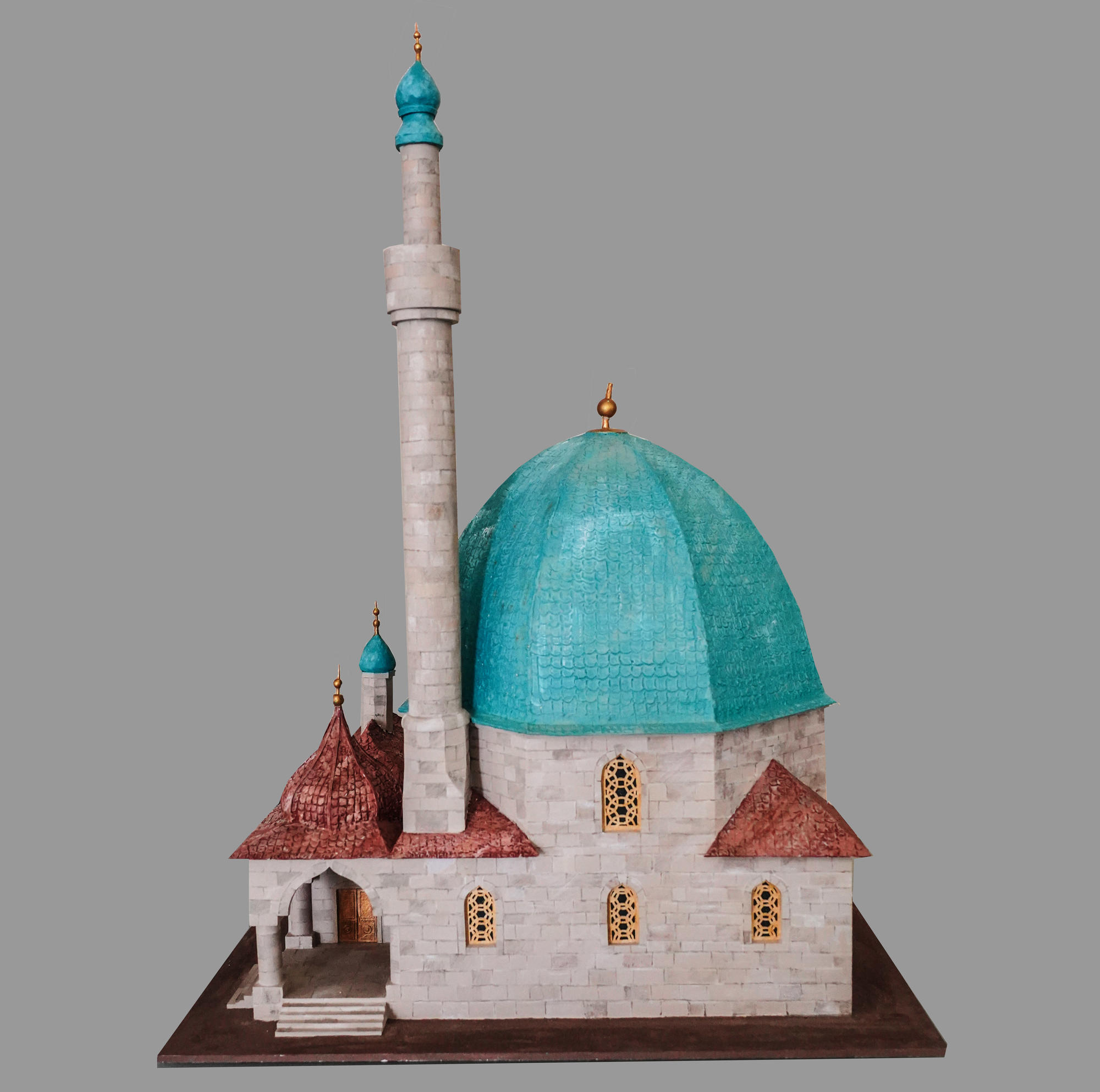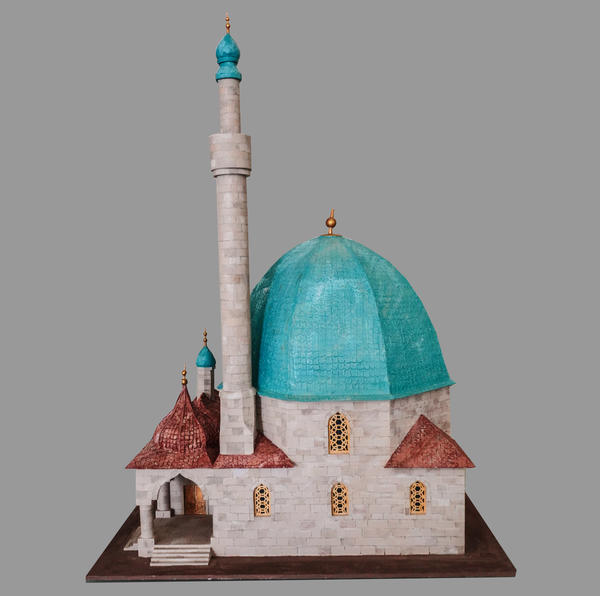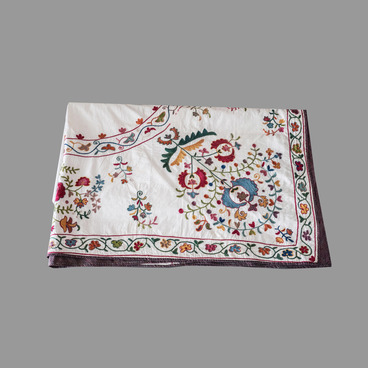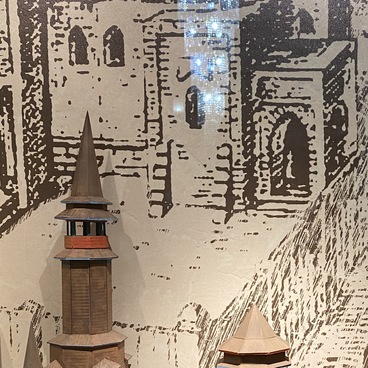Nur Ali Mosque was located in Kazan Kremlin in the 14th – 15th centuries. Based on the building’s architectural features and surviving records, historians believe that the mosque was built in the 13th – 14th centuries or during the early years of Kazan Khanate.
The stone mosque was mentioned multiple times in Russian medieval documents; there is information about it in ethnographic literature of later periods. According to historical documents, the mosque was located next to Nur Ali Tower (called Muralei Tower in Russian sources) completing the central mosque group built near Kazan Khan’s palace.
The mosque was presumably situated on the Kremlin hillside, next to which Taynitskaya Tower is located today. Information obtained from various sources suggests that Taynitskaya Tower is located where Muralei Tower used to be. It is associated with key events of the storming of Kazan.
The besieged went through Muralei Tower to a nearby spring to fetch water enabling them to withstand the long siege. Ivan the Terrible’s troops learned about it, dug a tunnel and put gunpowder into it turning the tower into a ruins. And it was through that tower that Ivan the Terrible entered the Kremlin: the street from the entrance to modern Syuyumbike Tower had to be cleaned from heaps of dead bodies.
In those years, Kazan had close ties with Crimea, and Kazan Khanate’s looked up to Istanbul as far as its architecture was concerned. According to historians, it is from there that famous architects came to Kazan and took an active part in the construction of mosques, including, possibly, Nur Ali. The building represented a typical example of restrained Ottoman style.
Nur Ali Mosque was designed as a central domed structure; its dimensions were approximately 15×17 metres. An outer entrance hall adjoined the building from the eastern facade, and one or two minarets towered in its corners. The building was most likely built of stone, had simple concise shapes, the roof made of tiles or wood had very few carved details adorning only the entrance area or minaret tops.
Mosque interiors of those times did not have rich decoration either: they were rather modest with only the footing and dome adorned with painted colourful ornaments. The mihrab and the wooden bar were most magnificently decorated. The interior was also decorated with fabrics, carpets and lights.
The 1:50 scale model represents Nur Ali Mosque as described by historians.
The stone mosque was mentioned multiple times in Russian medieval documents; there is information about it in ethnographic literature of later periods. According to historical documents, the mosque was located next to Nur Ali Tower (called Muralei Tower in Russian sources) completing the central mosque group built near Kazan Khan’s palace.
The mosque was presumably situated on the Kremlin hillside, next to which Taynitskaya Tower is located today. Information obtained from various sources suggests that Taynitskaya Tower is located where Muralei Tower used to be. It is associated with key events of the storming of Kazan.
The besieged went through Muralei Tower to a nearby spring to fetch water enabling them to withstand the long siege. Ivan the Terrible’s troops learned about it, dug a tunnel and put gunpowder into it turning the tower into a ruins. And it was through that tower that Ivan the Terrible entered the Kremlin: the street from the entrance to modern Syuyumbike Tower had to be cleaned from heaps of dead bodies.
In those years, Kazan had close ties with Crimea, and Kazan Khanate’s looked up to Istanbul as far as its architecture was concerned. According to historians, it is from there that famous architects came to Kazan and took an active part in the construction of mosques, including, possibly, Nur Ali. The building represented a typical example of restrained Ottoman style.
Nur Ali Mosque was designed as a central domed structure; its dimensions were approximately 15×17 metres. An outer entrance hall adjoined the building from the eastern facade, and one or two minarets towered in its corners. The building was most likely built of stone, had simple concise shapes, the roof made of tiles or wood had very few carved details adorning only the entrance area or minaret tops.
Mosque interiors of those times did not have rich decoration either: they were rather modest with only the footing and dome adorned with painted colourful ornaments. The mihrab and the wooden bar were most magnificently decorated. The interior was also decorated with fabrics, carpets and lights.
The 1:50 scale model represents Nur Ali Mosque as described by historians.



